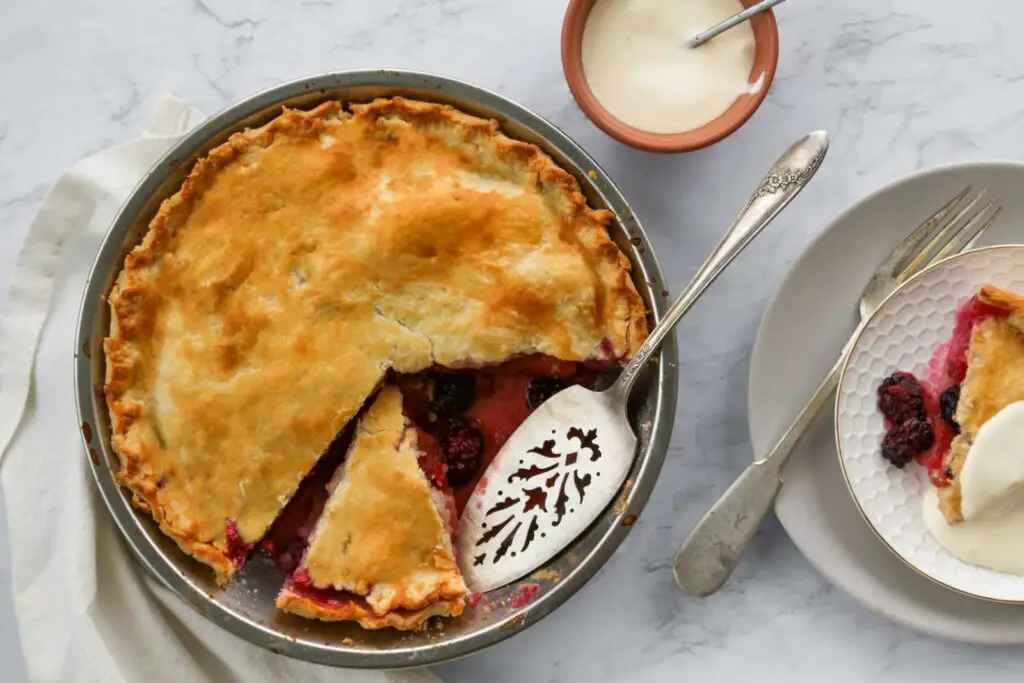
Empanadas are savory pastries that hail from Latin America, and they come in various delicious fillings, such as meat, cheese, vegetables, or even sweet fruit combinations. These hand-held treats are adored for their flaky crust and flavorful insides, making them a popular choice for snacks, appetizers, or even a hearty meal. But what if you have an abundance of empanadas or want to prepare them in advance for future enjoyment? Freezing empanadas is a fantastic solution that allows you to savor these delectable creations whenever you please. In this article, we’ll provide you with a step-by-step guide on how to freeze empanadas while preserving their taste and texture.
Here’s a comprehensive guide on how to freeze empanadas:
Step 1: Prepare Your Empanadas
Before you embark on the journey of freezing your empanadas, it’s crucial to start with a well-prepared batch of these delectable pastries. Whether you’ve crafted the classic meat-filled empanadas that are a favorite at family gatherings or experimented with innovative vegetarian fillings, the first step in preserving their flavor and texture through freezing is ensuring they are cooked to perfection.
The reason behind this is simple: freezing won’t magically enhance the quality of your empanadas. Instead, it serves as a method to maintain the existing taste and texture. Therefore, starting with empanadas that are fully cooked and have cooled to room temperature is essential.
Here’s why this step is vital:
- Flavor Preservation: Empanadas derive their delightful taste from the harmonious blend of ingredients within. Cooking them to perfection ensures that the flavors have melded together, creating a mouthwatering sensation. Freezing them at this stage helps lock in these flavors, preventing any potential loss during storage.
- Texture Maintenance: Whether your empanadas feature a flaky crust or a tender, doughy shell, the cooking process plays a significant role in achieving the desired texture. Empanadas that have cooled to room temperature before freezing are less likely to become soggy or lose their crispness during the thawing and reheating process.
- Food Safety: Ensuring that your empanadas are fully cooked is also essential from a food safety perspective. It helps eliminate any potential bacterial concerns that might arise from undercooked fillings, such as meats or vegetables.
Step 2: Gather Your Supplies
When it comes to freezing your empanadas effectively, having the right tools and supplies at your disposal is essential. These items are not only practical but also crucial for ensuring that your empanadas remain in top-notch condition throughout their time in the freezer. Here’s a breakdown of the supplies you’ll need and why they are important:
- Baking Sheet: A baking sheet serves as a stable and flat surface for initially freezing your empanadas. It allows you to arrange them in a way that prevents sticking and ensures they maintain their shape during the freezing process.
- Parchment Paper: Lining your baking sheet with parchment paper is essential to prevent your empanadas from adhering to the surface. This barrier ensures easy removal once they are frozen and ready for storage.
- Plastic Wrap: Plastic wrap plays a crucial role in protecting each individual empanada. Wrapping them individually helps prevent freezer burn and keeps the empanadas’ flavors and textures intact.
- Aluminum Foil: While plastic wrap is excellent for individual empanada protection, aluminum foil is ideal for an additional layer of insulation when packaging multiple empanadas together. It provides an extra barrier against freezer burn and helps maintain freshness.
- Marker: Labeling is a vital aspect of freezing food. Use a marker to clearly label your storage containers or resealable bags with the date of freezing. This ensures that you can keep track of the freshness of your empanadas and consume the oldest ones first.
- Freezer-Safe Storage Containers or Resealable Bags: Your empanadas will need proper containment during their time in the freezer. Freezer-safe containers or resealable bags are designed to withstand the cold temperatures and prevent moisture from seeping in or out, preserving the empanadas’ quality.
Step 3: Line a Baking Sheet
Now that you have gathered your essential supplies for freezing empanadas, it’s time to delve into the specifics of how to prepare your baking sheet. This seemingly simple step plays a crucial role in ensuring the success of the freezing process. Here’s why it’s essential to line your baking sheet with parchment paper:
Preventing Stickiness: Empanadas, especially when they’re in their unbaked or partially baked state, have a tendency to stick to surfaces. If you were to place them directly on an unlined baking sheet, there’s a significant risk that they could adhere to it as they freeze. This can result in a messy and frustrating experience when it comes time to remove them.
- Maintaining Shape: Empanadas have unique shapes, and preserving their appearance is essential, both for aesthetics and ensuring even freezing. Parchment paper provides a non-stick surface that allows your empanadas to maintain their individual shapes during the freezing process. This is especially important if you’re freezing multiple empanadas at once, as it prevents them from fusing together.
- Ease of Removal: Once your empanadas are frozen and ready for storage, the parchment paper facilitates easy removal. You can simply lift each empanada off the baking sheet without any resistance or damage, ensuring that they remain intact and visually appealing.
- Cleanliness: Using parchment paper also helps keep your baking sheet clean. Since empanadas won’t stick to it, there’s no need to worry about scrubbing off baked-on residues after the freezing process.
To line your baking sheet with parchment paper, simply cut a piece that fits the sheet’s dimensions and place it on the surface. This extra layer acts as a protective barrier between your empanadas and the baking sheet, preventing any unwanted sticking and ensuring that your frozen empanadas emerge from the freezer in the best possible condition. It’s a small but significant step in the journey to preserving the deliciousness of your homemade empanadas.
Step 4: Arrange the Empanadas
Now that you have prepared your baking sheet with parchment paper, it’s time to carefully arrange your cooked and cooled empanadas. This step may seem straightforward, but it plays a critical role in ensuring that your frozen empanadas maintain their individuality and quality. Here’s why it’s important to arrange them properly:
- Preventing Sticking: Empanadas, when frozen, can become surprisingly sticky. If you place them too close together on the baking sheet, there’s a risk that they may touch or even fuse together as they freeze. This could result in a clump of empanadas that are difficult to separate, leading to potential damage when you try to separate them later.
- Maintaining Individual Shapes: Empanadas come in various shapes and sizes, depending on how you’ve folded or sealed them. Arranging them with some distance between each other ensures that they maintain their unique shapes throughout the freezing process. This is particularly important if you’ve put time and effort into crafting beautifully shaped empanadas.
- Even Freezing: Proper spacing on the baking sheet allows for better air circulation around each empanada. This, in turn, promotes even freezing, helping to preserve the empanadas’ texture and flavor uniformly. Uneven freezing can lead to inconsistencies in taste and texture when you eventually reheat them.
- Ease of Handling: When it’s time to package your empanadas for long-term storage, having them neatly arranged on the baking sheet makes the process easier and less prone to damage. You can simply lift each empanada individually without disturbing the others.
To arrange your empanadas, place them on the parchment paper-lined baking sheet with some space between each one. Typically, leaving about an inch of space around each empanada is sufficient to prevent them from sticking together. If you have a large batch to freeze, you may need to use multiple baking sheets to ensure they are all properly spaced.
Step 5: Flash-Freeze
With your empanadas neatly arranged on the parchment paper-lined baking sheet, it’s time to move on to the flash-freezing process. This step is pivotal in maintaining the quality of your empanadas during storage. Here’s why flash-freezing is crucial and how to go about it:
- Preserving Individual Shapes: Empanadas come in various shapes, and it’s important to preserve these shapes during freezing. Flash-freezing is the process of rapidly freezing your empanadas to ensure that they maintain their individuality. When you place your baking sheet in the freezer, the empanadas begin to freeze quickly on the outside, preventing them from sticking together or becoming misshapen.
- Preventing Clumping: If empanadas were to freeze slowly or at varying rates, moisture within them could migrate to the surface, causing them to stick together or form an undesirable clump. Flash-freezing prevents this by creating a solid, protective outer layer of ice that locks in the empanadas’ moisture and maintains their integrity.
- Ensuring Even Freezing: Flash-freezing also ensures that your empanadas freeze uniformly. This is important for preserving their texture and flavor consistency. Even freezing minimizes the risk of parts of an empanada becoming overly dry or soggy when you eventually reheat them.
- Convenience and Storage: Flash-freezing your empanadas individually on the baking sheet makes them easier to handle and package for long-term storage. Once they are firm to the touch, you can transfer them into freezer-safe containers or resealable bags without worrying about them sticking together or losing their shape.
To flash-freeze your empanadas, simply place the baking sheet in the freezer and leave it there for a few hours. Depending on the size and thickness of your empanadas and the temperature of your freezer, this may take anywhere from 2 to 4 hours. You’ll know they are ready when they feel firm to the touch.
Step 6: Wrap the Empanadas
After successfully flash-freezing your empanadas, it’s time to transition them into a more protective packaging to ensure they stay in prime condition throughout their stay in the freezer. This step involves individually wrapping each empanada with plastic wrap. Here’s why this extra layer of protection is so essential:
- Preventing Freezer Burn: Freezer burn is a common issue when food is exposed to the cold, dry air of the freezer for an extended period. It can negatively impact the texture and flavor of your empanadas. By wrapping each empanada in plastic wrap, you create a barrier that helps prevent freezer burn. The plastic wrap seals in moisture, keeping your empanadas moist and delicious.
- Maintaining Flavor and Texture: Empanadas are beloved for their combination of crispy crusts and flavorful fillings. Wrapping them individually in plastic wrap helps maintain these crucial characteristics. It prevents moisture loss and keeps the empanadas from becoming overly dry or soggy during their time in the freezer.
- Preventing Cross-Contamination: Individually wrapping your empanadas not only helps protect them from freezer burn but also prevents the mingling of flavors and odors. In the confined space of the freezer, strong-smelling foods can potentially affect the taste of neighboring items. Plastic wrap acts as a barrier, ensuring your empanadas retain their distinct flavors.
- Easy Identification: When you’re ready to enjoy your frozen empanadas, it’s handy to have them individually wrapped. This allows you to select and thaw only the quantity you need without disturbing the others. Plus, it makes labeling and organization easier.
To wrap your empanadas individually, simply take a piece of plastic wrap and place an empanada in the center. Fold the wrap over the empanada, tucking in the sides and ensuring it’s completely sealed. You can repeat this process for each empanada, creating a protective layer for all of them.
Step 7: Place in Storage Containers or Bags
With your empanadas individually wrapped in plastic wrap, the next critical step is to transfer them into suitable storage containers or resealable freezer bags. This step is crucial for maintaining the quality of your frozen empanadas during long-term storage. Here’s why it’s important and how to go about it:
- Airtight Protection: Empanadas are vulnerable to moisture and air, both of which can lead to freezer burn and the deterioration of their flavor and texture. Airtight storage containers or resealable bags create a protective barrier that helps keep the elements at bay. This barrier preserves the empanadas’ freshness and taste.
- Preventing Cross-Contamination: The freezer is a shared space for various frozen items, and the exchange of odors and flavors can occur. Placing your individually wrapped empanadas in airtight containers or bags ensures that they remain isolated from other freezer items, preventing any unwanted flavor transfers.
- Efficient Use of Space: Airtight containers and resealable bags are designed to optimize space in the freezer. They allow you to stack or arrange your frozen empanadas efficiently, maximizing the use of freezer space and keeping everything organized.
- Easy Identification: Properly labeled containers or bags make it easy to identify the contents and the date of freezing. This labeling helps you keep track of the freshness of your empanadas, ensuring you use the oldest ones first.
When transferring your wrapped empanadas to storage containers or bags, follow these steps:
- Choose the Right Containers or Bags: Ensure that the containers or bags you use are explicitly labeled as freezer-safe. These are designed to withstand the low temperatures of the freezer and prevent freezer burn.
- Remove Excess Air: If you’re using resealable bags, press out as much air as possible before sealing them. Excess air can lead to freezer burn and deteriorate the quality of your empanadas.
- Arrange the Empanadas Neatly: Place your individually wrapped empanadas inside the containers or bags, arranging them in a single layer if possible. This prevents overcrowding and helps maintain their shapes.
- Seal Tightly: Ensure that your containers are securely sealed or that your resealable bags are tightly closed. This step is crucial for maintaining the airtight environment that protects your empanadas.
Step 8: Label and Date
Once your empanadas are safely stored in airtight containers or resealable bags, the next crucial step is to label and date each container or bag. This simple yet significant step serves multiple purposes, making it easier to manage your frozen empanadas. Here’s why labeling and dating are important:
- Fresher Consumption: Empanadas, like most frozen foods, have a finite shelf life in the freezer. Over time, they may lose some of their quality, such as flavor and texture. By labeling and dating your containers or bags, you create a clear record of when you froze the empanadas. This ensures that you can use the oldest ones first, helping you enjoy your empanadas at their freshest.
- Organization: If you freeze a variety of foods or multiple batches of empanadas, it can become challenging to identify what’s inside each container or bag without labels. Clear labeling makes it easy to identify the contents at a glance, preventing any mix-ups or confusion.
- Planning Meals: Knowing the freezing date also allows you to plan your meals effectively. You can prioritize consuming the empanadas that have been in the freezer the longest, minimizing food waste and ensuring you get the most out of your homemade delights.
To label and date your containers or bags, follow these steps:
- Use a Marker: Select a permanent marker or a freezer-safe label that won’t smudge or fade in the freezer’s cold environment.
- Write the Date: On each container or bag, write the date you froze the empanadas. It’s helpful to use a consistent date format, such as MM/DD/YYYY, to prevent any confusion.
- Be Specific: If you’ve made different batches of empanadas with various fillings or flavors, consider adding a brief description to the label. This can help you quickly identify the specific empanadas you want to enjoy.
- Label All Containers or Bags: Ensure that every container or bag is labeled and dated before placing it in the freezer. This practice keeps your frozen food storage organized and easy to manage.
Step 9: Store in the Freezer
After meticulously preparing and packaging your empanadas, the final step is to store them in the freezer. This is where your efforts to preserve their quality come to fruition. Here’s why storing your empanadas in the freezer is crucial and how to do it effectively:
- Preservation of Freshness: The freezer is a controlled environment that maintains a consistently low temperature, which is essential for preserving the freshness of your empanadas. By freezing them promptly and properly, you halt the growth of bacteria and slow down the deterioration of taste and texture.
- Long-Term Storage: Storing your empanadas in the freezer allows you to enjoy them at your convenience over an extended period. Whether you’re preparing a batch for future meals, snacks, or entertaining guests, the freezer is your ally in keeping them ready for whenever you desire.
- Organization: Properly arranging your empanadas in the freezer ensures efficient use of space and minimizes the risk of damage during storage. An organized freezer makes it easy to locate and retrieve specific items without the hassle of rummaging through an unruly freezer.
To store your empanadas in the freezer effectively, consider the following tips:
- Maximize Space: Arrange your labeled and wrapped empanadas in a way that maximizes the available freezer space. Use shelves, drawers, or designated storage bins to keep them organized and prevent overcrowding.
- Avoid Crushing: Be mindful of how you stack or store your empanadas. Avoid placing heavy items on top of them, as this can crush or deform them, compromising their quality.
- Keep It Accessible: Store your empanadas in a way that allows you to access them easily. Place newer items behind older ones to ensure you use the oldest empanadas first, following the principle of first in, first out (FIFO).
- Maintain Temperature: Ensure that your freezer maintains a consistent temperature of 0°F (-18°C) or lower. Fluctuating temperatures can affect the quality of your frozen food.
How long can empanadas last in the freezer?
Empanadas can typically last in the freezer for up to 2-3 months while maintaining good quality. However, their longevity can vary depending on factors like the filling and storage conditions. To ensure their freshness, label and date your frozen empanadas, and consider using them within this timeframe for the best taste and texture.
Other related questions
How do I defrost empanadas?
To defrost empanadas, transfer them from the freezer to the refrigerator and let them thaw overnight, allowing for a gradual thawing process. Alternatively, you can use a microwave at a low power setting, using short intervals to avoid overheating. Another option is to reheat them directly from frozen in an oven or toaster oven, extending the cooking time slightly to ensure they heat through.
What’s the best way to reheat frozen empanadas?
The best way to reheat frozen empanadas is to preheat your oven to 350°F (175°C) and bake them for about 20-25 minutes for baked empanadas or 25-30 minutes for unbaked ones, until they are heated through and crispy. This method helps restore their original texture and ensures even heating. Alternatively, you can use an air fryer or stovetop methods like pan-frying with a little oil, but oven baking is often preferred for the best results.
Can I refreeze empanadas?
It is generally not recommended to refreeze empanadas once they have been thawed. Refreezing can compromise the quality and safety of the empanadas by potentially allowing the growth of harmful bacteria and affecting their texture. To minimize food waste, it’s advisable to only thaw the quantity of empanadas you intend to consume and avoid refreezing any leftovers.
How do I know if the empanadas have gone bad after being frozen?
Empanadas that have gone bad after freezing may exhibit signs such as freezer burn, off-putting odors, or a change in texture. Check for ice crystals on the surface, which can indicate freezer burn, and inspect for any unusual or sour smells. Additionally, if the empanadas appear discolored or have a mushy texture when reheated, it’s a sign that they may have deteriorated and should not be consumed.
Can I freeze empanadas with various fillings together?
It’s generally advisable to freeze empanadas with similar fillings together to prevent flavor transfer and maintain the distinct tastes of each variety. If you need to freeze empanadas with various fillings together, make sure they are well-wrapped and sealed to minimize the risk of flavor mingling. Properly labeled packaging can help you identify different fillings when it’s time to reheat and enjoy them.
Do empanadas lose flavor or texture when frozen?
When frozen and stored properly, empanadas can retain their flavor and texture quite well. However, the quality of frozen empanadas may be influenced by factors like the filling, freezing and reheating methods, and storage duration. Adhering to recommended freezing and reheating techniques is essential to ensure that empanadas maintain their desired taste and texture after being frozen.
Can I freeze empanadas with delicate fillings like cheese or vegetables?
Yes, you can freeze empanadas with delicate fillings like cheese or vegetables. However, it’s important to take extra care when packaging them to maintain their texture. Ensure that the empanadas are tightly wrapped in plastic wrap and stored in airtight containers or bags to prevent moisture loss and freezer burn. Properly reheating these delicate-filled empanadas will help mitigate any potential texture changes during freezing.
Are there any specific tips for freezing gluten-free empanadas?
Freezing gluten-free empanadas follows similar principles to regular ones. Ensure that the gluten-free dough is well-prepared and rolled out properly. When freezing, use the same guidelines for packaging, labeling, and date marking. Gluten-free empanadas may require slightly shorter or longer cooking times when reheating, so be attentive during the reheating process to avoid overcooking and maintain their desired texture.








